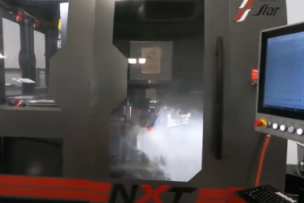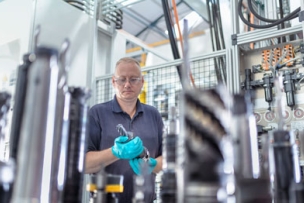“Ask any customer what’s most important: short cycle time or long tool life? Most of the time, they’ll say both,” says Dirk Dietsch, M.A. Ford’s regional business manager for the Great Lakes, who suggests that achieving these objectives requires the highest quality cutting tools available.
He’ll also tell you that not all tools are created equal. Their manufacturers should utilize the finest carbide substrate available, the best hard coating technology, and be concerned with grinding the most effective geometry possible, paying special attention to the cutting edge.
“At M.A. Ford, we feel the highest quality cutting tool is of the utmost importance, followed closely by availability and delivery,” Dietsch says. “What good is a great tool if you can’t rely on getting it? This is what sets us apart from many of our competitors’ products, especially those made offshore, where delivery issues are common.”
“We also offer the technical support needed to help customers troubleshoot problems or improve their machining processes, and are happy to supply them with a complete analysis illustrating the cost savings a high-quality tool can deliver,” he adds. “For us, the bottom line is all about helping our customers make money.”
Read more: Career Spotlight: How Do I Become a CNC Programmer?
Say Goodbye to HSS
Daniel Caraveo, applications engineer for OSG USA Inc., shares an application story from a shop drilling interrupted holes in 30 HRC steel.
“Their main problem was drill walk, followed by short, unstable tool life,” he says.
“Due to extended drill length, they were starting the hole with a carbide center drill, then using an extended length HSS drill,” he adds. “Between the lower cutting speeds and the need to peck, the cycle times were also very long. They reached out to us for help in finding a better solution.”
OSG recommended using one of its stub-length tools to drill a pilot hole, then finishing with an 8xD double margin drill. Both tools were solid carbide, coolant-fed, and boasted one of the company’s proprietary coatings. The result? OSG’s high-performance solution reduced cycle times by 60 percent, leading to an annual savings of $49,674.
“And because the carbide tools eliminated any drill walk, process repeatability and part quality also improved,” he adds. “The customer was quite pleased.”
Read more: Automotive Industry Trends: 3 Things to Watch for in Electric Car Manufacturing
Double Jeopardy








Talk to Us!
Hey, thanks for the fantastic article. And I agree with the topic, in general, you get what you pay for. If you buy cheap tools, you will have to buy more as they are of poor quality. Secondly, you are directly compromising the quality of your CNC machined parts. So, it is better not to compromise on the quality of your tools.
39I want obtaining possibilities to buy kind of tools from you if ok. It’s better for now to message me instead emails me. So long!
53Leave a reply
Your email address will not be published. Required fields are marked *